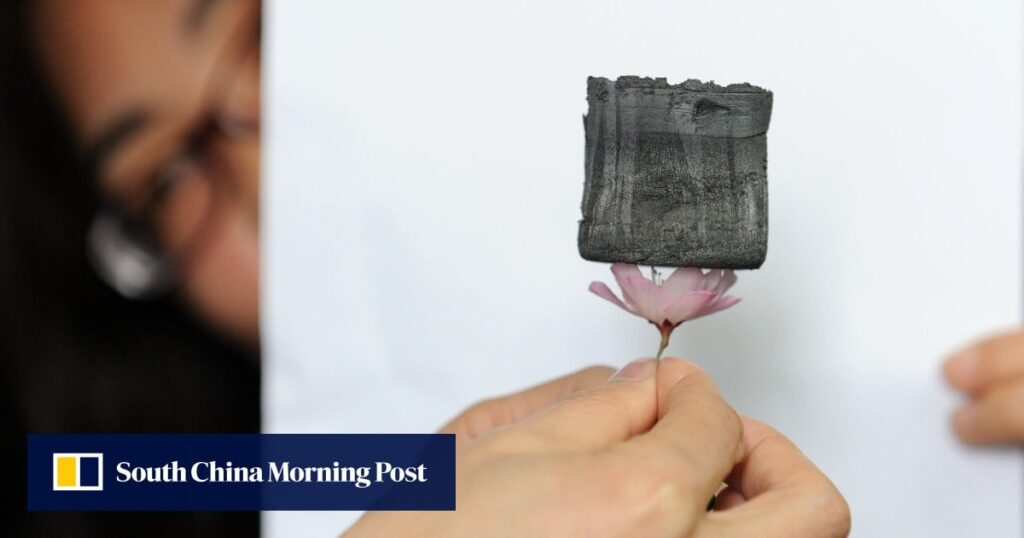Zhejiang University Researchers Develop Revolutionary Aerogel Fibers Inspired by Polar Bear Hair
Traditional aerogel, made by replacing the liquid in a gel with air, is extraordinarily light, resembling a solid cloud of smoke. Its high porosity gives it exceptional heat resistance, but this also makes it brittle and challenging to process, limiting its use in civilian applications.
Overcoming Fragility: Revolutionary Research at Zhejiang University
Until now, traditional aerogel has mainly been used in engineering, particularly in the aerospace industry. The China Aerospace Science and Industry Corporation as well as NASA have utilized aerogel in Mars rovers, enduring extreme temperatures ranging from thousands of degrees during the Martian landing to -130 degrees Celsius (-202 degrees Fahrenheit) on the planet’s surface.
Now, a groundbreaking development has emerged from researchers at Zhejiang University, as they have overcome aerogel’s fragility after being inspired by the structure of polar bear hair. Led by associate professor Gao Weiwei and professor Bai Hao, the team published its findings in the peer-reviewed journal Science.
Mimicking Polar Bear Hair: The Revolutionary Aerogel Fibers
The aerogel fibre developed by the Zhejiang University team mimics the structure of polar bear hairs, providing outstanding thermal insulation while maintaining strength and flexibility. This core-shell structure, with porous core enclosed within a dense shell, is key to keeping the polar bear fur warm and dry.
“We designed an encapsulated aerogel fibre (EAF) with similar thermal insulation mechanisms and developed a facile two-step fabrication route to mimic the core-shell structure,” Bai outlined in the paper. This strong polymeric aerogel fibre with lamellar pores cased within a thin, stretchable rubber layer retains the thermal insulation properties of traditional aerogel while improving its suitability for mechanical applications like knitting or weaving.
Unlike conventional silica aerogel, the EAF can be bent and twisted. “Despite its high internal porosity of over 90 per cent, our fibre is stretchable up to 1,000 per cent strain, significantly outperforming traditional aerogel fibres, which stands at about 2 per cent strain,” Bai said.
Practical Applications: Innovative Uses of EAF
The practicality of the EAF was demonstrated by weaving a jumper and comparing its thermal insulation to common textile materials. The thermal insulation of the EAF jumper was comparable to that of a traditional down jacket but only one-fifth as thick.
In an experiment, a volunteer wore textiles made of EAF, down, wool, and cotton in a -20 degree Celsius environment. The surface temperatures of these materials were 3.5 degrees, 3.8 degrees, 7.2 degrees, and 10.8 degrees respectively, indicating the superior insulation of EAF.
As well as being strong and stretchable, EAF can also be washed and dyed, improving its use in practical applications. Traditional silica aerogel will absorb water and collapse on itself, losing its thermal insulation qualities in wet or humid environments. However, EAF maintains its performance even after machine washing.
“The fibre also retains its properties after 10,000 stretching cycles, indicating its potential for multifunctional use beyond thermal insulation textiles,” Bai said.
Potential for Advanced Thermal Textiles and Mass Production Challenges
Professor Zhang Xuetong of the Suzhou Institute of Nano-tech and Nano-bionics at the Chinese Academy of Sciences highlighted the potential of the aerogel fibres in advanced thermal textiles. However, he noted the gap between existing technology and capacity for mass production.
“Challenges exist regarding how to develop fast spinning technology and resolve the continuous fabrication that is necessary for mass production,” he said.
Revolutionizing Civilian and Industrial Uses
In addition to its potential for civilian use, EAF fibre holds promise for industries already familiar with aerogels. “EAF textiles feature excellent thermal insulation and multifunction and have great potential in areas such as military uniforms and spacesuits in extremely cold environments,” Bai noted in the paper.
This breakthrough in aerogel fiber development offers new possibilities in a wide range of practical applications and industries, revolutionizing the way we approach thermal insulation and advanced textile materials. The future applications of EAF are not only promising but also revolutionary for various industries and everyday use.

